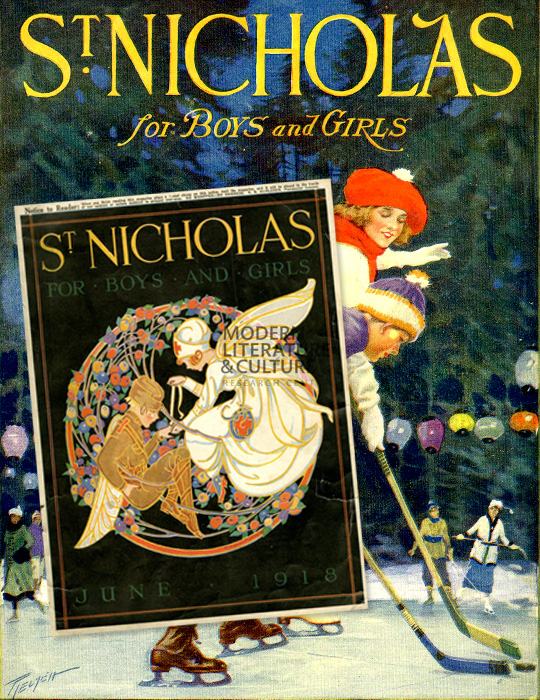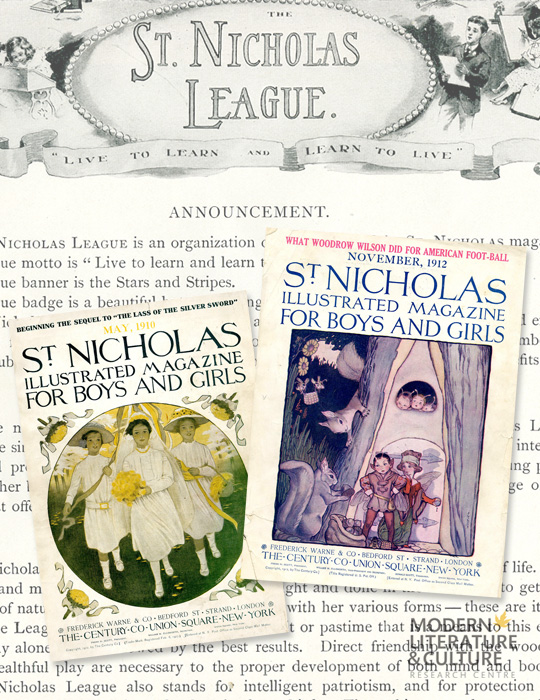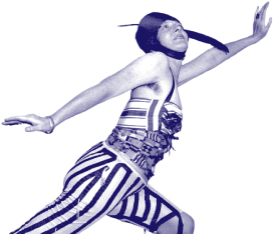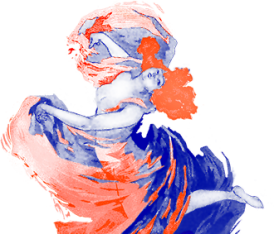"Make it a rule never to give a child a book that you would not read yourself,” advised famed playwright George Bernard Shaw. Shaw’s sentiment was shared by influential writer and founding editor of St. Nicholas: Mary Mapes Dodge. "Let there be no sermonizing,” writes Dodge in the first issue of St. Nicholas, "no spinning of facts, no rattling of dry bones…[;] the ideal child’s magazine is a pleasure ground.”

The Modern Literature and Culture Research Centre is very pleased to house an extensive collection of St. Nicholas magazines. The Centre received this generous donation from an anonymous donor. The gift included issues of St. Nicholas dating from 1875 to 1926, constituting the majority of the magazine’s run (1873-1943). We are fortunate to have over 300 paperback monthly issues as well as hardcover volumes which each contain 6 reprinted issues. The condition of the texts vary: some are in fine shape while others are considerably worn. Although a number of anthologies of St. Nicholas exist, original issues of St. Nicholas are rare. Many issues of St. Nicholas can, however, be accessed online via Project Gutenberg, Google Books, and the University of Florida Digital Collections.
The first issue of St. Nicholas was printed in November 1873 with a press run of 40,000. St. Nicholas was not the first children’s periodical, a distinction that belongs to The Lillilputan Magazine (1751-52), nor was it the only magazine of its day oriented towards a young readership: indeed, children’s magazines rose to prominence in the mid to late nineteenth century. Other popular children’s periodicals from this time include The Boy’s Own Magazine and The Juvenile Miscellany.

What distinguished St. Nicholas was largely the high quality of writing. Dodge introduced well known authors including Mark Twain, Theodore Roosevelt, Rudyard Kipling, and Louisa May Alcott. The magazine featured poetry, short stories, serialized chapters from novels, science lessons, and myriad other subjects. Dodge’s commitment to providing top-notch entertainment and education for her readers paid off: "By 1875, [two years after its first issue,] St. Nicholas had seventy thousand paid subscribers with an even larger readership” (Marcus 57).

The St. Nicholas League, arguably the magazine’s most famous feature, was added in 1899. The St. Nicholas League encouraged reader participation by asking subscribers to submit their own photos, artwork, poetry, and short fiction. Select contributions were published in the magazine, and exceptional entries were awarded gold and silver buttons. St. Nicholas readers weren’t being groomed to be passive receptacles of morality and tradition: they were being trained to become artists in their own right. A number of League members went on to become successful writers, such as F. Scott Fitzgerald and E.B. White.
Laura Berger
Research Team Member, MLC Research Centre
St. Nicholas is the topic of research conducted at the MLC Research Centre by Laura Berger, MA, and Tania Menjivar, Arts and Contemporary Studies student.
For an Annotated Bibliography on St. Nicholas, click here.
archive@mlc.ryerson.ca or
416.979-5000 ext. 7668








